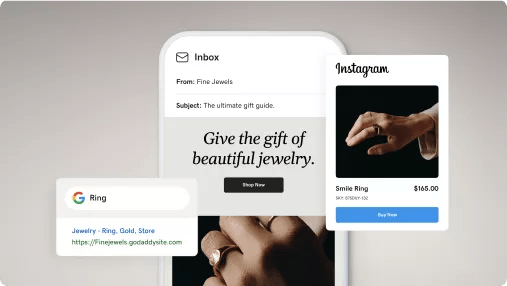Accomplish Excellence with The Ad Firm SEO: Enhancing Your Online Success
Enhance Individual Experience and Drive Website Traffic With Receptive Website Design
In today's digital landscape, where customers are accessing internet sites from a plethora of tools, receptive website design has actually become more vital than ever before. With its ability to adjust and perfectly adapt to different screen sizes, responsive design not just improves individual experience however additionally drives website traffic to your web site. Why is this style approach so important? How does it increase user engagement and increase website traffic? In this discussion, we will check out the essential components of effective responsive design, delve into the finest practices for its execution, and discover the secrets to improving individual experience while driving even more traffic to your site.
Why Responsive Website Design Matters
Receptive internet design is an essential element of modern internet development as a result of its capability to guarantee ideal customer experience across different gadgets and display dimensions. With the spreading of mobile phones, tablet computers, and other mobile phones, it has come to be important for web sites to adjust and provide smooth functionality regardless of the gadget being utilized.
The key reason that receptive website design matters is that it enables individuals to have a regular and delightful surfing experience, despite the tool they are utilizing. A receptive web site automatically readjusts its design, layout, and content elements to fit the display dimension and resolution of the device, ensuring that individuals can conveniently engage and navigate with the site with no inconvenience or frustration.
Additionally, receptive internet design also plays a considerable function in search engine optimization (SEARCH ENGINE OPTIMIZATION) Internet search engine, such as Google, focus on sites that are mobile-friendly and responsive in their search results. By incorporating receptive style principles, sites can enhance their presence and ranking, causing enhanced natural web traffic and possible customers.

Boosting User Engagement Through Responsive Design
Enhancing customer engagement is an essential goal of responsive design, as it guarantees that customers can quickly access and connect with internet site web content on any tool. With the raising use of tablets and mobile phones, it is critical for web sites to adapt to various display sizes and resolutions. Receptive layout allows web sites to immediately adjust their format and web content to give a seamless customer experience throughout tools.
One of the major ways responsive style enhances user involvement is by decreasing tons times. With a responsive internet site, customers do not have to wait on separate mobile versions to lots, causing much faster accessibility to web content. This improved speed leads to greater customer complete satisfaction and urges them to invest more time on the website.
Additionally, receptive style enhances individual engagement by improving navigation and interface (The Ad Firm Web Design). When a site is created responsively, buttons and menus are enhanced for touch communications, making it less complicated for users to navigate and communicate with the website on their smart phones. This intuitive and easy to use experience maintains users engaged and urges them to check out more of the internet site
Moreover, responsive layout enables far better material exposure and readability. By adapting the design and typeface dimensions to various tools, responsive sites guarantee that users can easily understand the material and review. This enhances user involvement by decreasing the need for zooming or scrolling to check out the text.
Boosting Site Web Traffic With Responsive Website Design
With the expanding popularity of mobile phones, having a site that is responsive to various display sizes and resolutions is crucial for driving boosted traffic. In today's digital landscape, users are accessing sites from a variety of tools such as smart devices, tablets, and computer. Each of these tools has different screen dimensions and resolutions, and if your website is not made to adapt to these variants, it can lead to an inadequate user experience and a loss of potential website traffic.
Responsive website design makes certain that your internet site looks and functions optimally across all devices. By using adaptable grids, fluid images, and media questions, responsive layout enables your web site to automatically change its design, material, and navigation to fit any screen size. This means that individuals will have a seamless surfing experience despite whether they are using a small smartphone or a big desktop computer system.
Key Elements of Efficient Responsive Style
Effective receptive layout includes several key elements that ensure a smooth user experience throughout various devices. This permits web content to be shown in a understandable and aesthetically appealing fashion on any device.
Another essential component is media questions. These enable designers to use various designs and formats based upon the qualities of the customer's tool, such as display size and positioning. By utilizing media questions, developers can optimize the presentation of web content for every device, making certain that it is conveniently accessible and legible.
Responsive images are also important in reliable receptive style. Pictures that are also large can reduce down page my blog tons times on smart phones, while images that are also small may show up pixelated on larger screens. By utilizing strategies such as receptive image resizing and lazy loading, developers can guarantee that pictures are appropriately sized and optimized for each gadget.
Lastly, effective receptive style entails a mobile-first technique. This Click Here means designing and focusing on material for smart phones first, and then improving the style and increasing for larger displays. This method guarantees that the most vital material is conveniently obtainable on smaller sized screens, while still supplying a rich experience on larger devices.
Finest Practices for Applying Receptive Web Style
Implementing responsive website design needs mindful consideration of various finest techniques to guarantee an optimal user experience across different tools. Right here are some vital ideal methods to follow when applying receptive website design.
To start with, it is critical to prioritize mobile users. With the boosting dominance of mobile gadgets, making for mobile-first has become vital. Start deliberately for smaller sized screens and after that gradually enhance the format for larger displays.

An additional important best method is to enhance pictures for various screen resolutions. Large photos can slow down the packing time of your internet site, particularly on mobile phones with slower links. Use receptive photos that can be resized based upon the gadget's display resolution to enhance efficiency.
In addition, examination your website on various devices and display dimensions to ensure a seamless and regular experience. There are various testing tools available that More Help can assist you identify any concerns and make required modifications.
Last but not least, prioritize usability and access. Guarantee that your internet site is very easy to navigate, with clear and succinct web content. Make certain that your internet site comes to individuals with disabilities and adheres to access guidelines.
Conclusion
In final thought, receptive web style plays an important function in enhancing user experience and driving traffic to internet sites. By embracing receptive design principles, web sites can ensure ideal watching experiences across different devices, leading to increased individual involvement.
Optimizing customer interaction is an essential objective of responsive layout, as it ensures that individuals can quickly accessibility and interact with internet site content on any type of gadget. Receptive style makes it possible for sites to automatically adjust their format and content to offer a smooth individual experience throughout gadgets.
Additionally, responsive style boosts customer interaction by improving navigation and user interface.Responsive photos are additionally essential in effective responsive design. By taking on responsive design concepts, web sites can make certain optimum seeing experiences throughout various devices, leading to raised individual engagement.